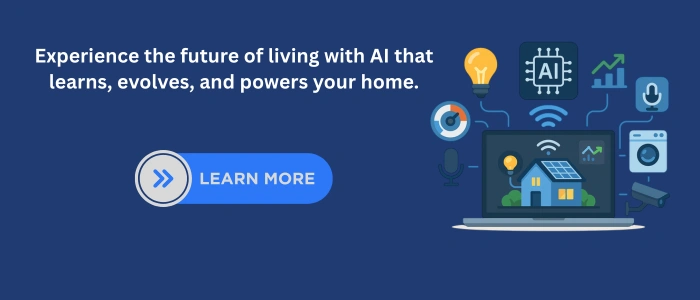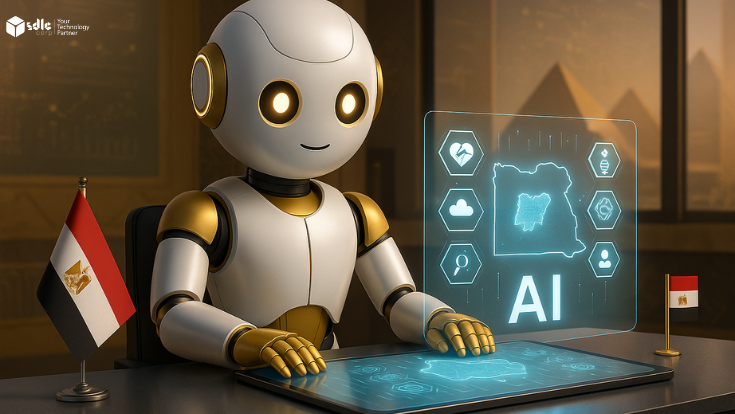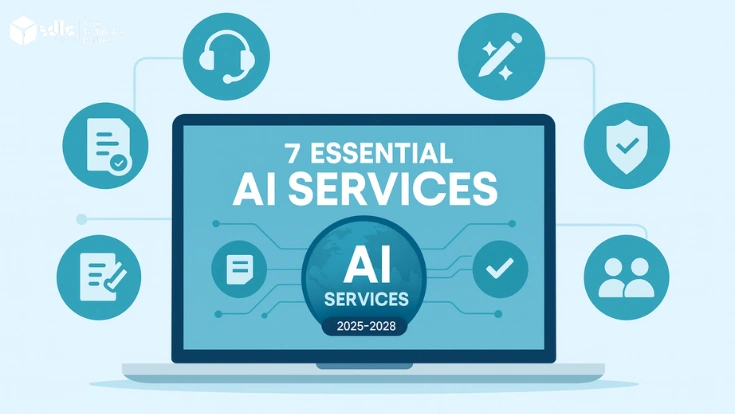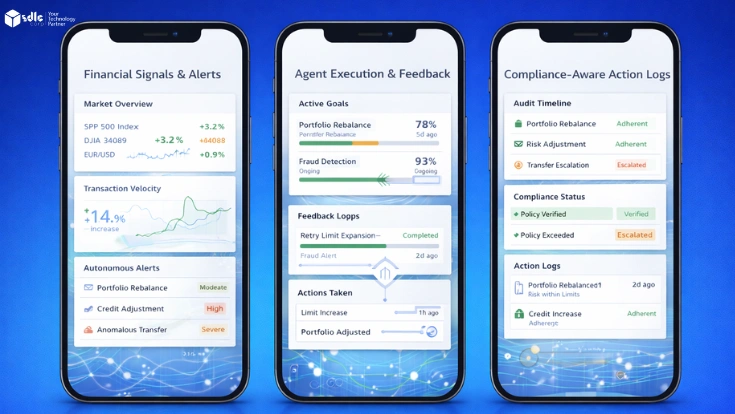Introduction
Generative AI in Home Automation is no longer an idea for the future. It is happening today in real households, where artificial intelligence is moving beyond simple commands to create smarter, more adaptive living spaces. Unlike early automation that followed fixed rules, generative models can learn from user behavior, predict needs, and design new ways to make a home safer, more efficient, and more comfortable.
The use of AI-powered smart home solutions is reshaping how people interact with their environment. From temperature settings that adjust based on patterns, to security systems that generate real-time insights, generative AI for smart devices is becoming central to the modern household. This blog explains the technical foundation, real-world use cases, challenges, and the future scope of this technology. It also highlights how it fits into the broader conversation about the future of AI in home technology.
Role of Generative AI in Smart Home Systems
Home automation platforms manage inputs from multiple devices, sensors, and user preferences. Generative AI can support these systems by interpreting natural language commands, summarising usage patterns, and generating configuration responses. Many teams explore Generative AI development services to build models that adapt to household behaviour while operating within device and privacy constraints.
What Makes Generative AI Different in Home Automation
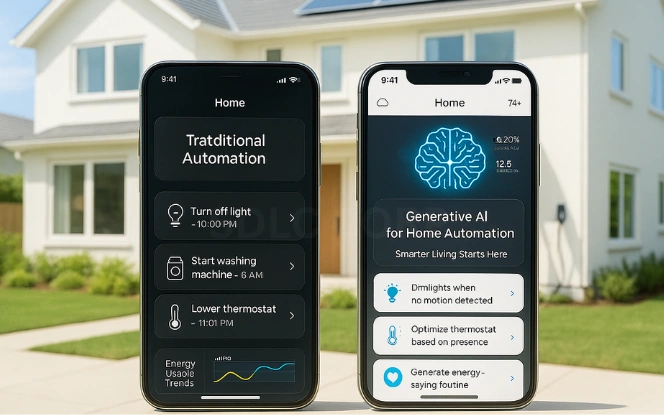
Traditional automation uses pre-programmed commands. A smart bulb turns off at 10 PM because it was told to. Generative models work differently. They create new outputs based on patterns in data. That means your home can generate energy-saving routines, predict when an appliance needs repair, or suggest improved security measures.
Generative AI for smart devices allows personalization at a deeper level. For example, your home may learn the unique way you move, talk, or use devices. Instead of rules, the system creates adaptive responses. This is why personalized smart home automation is growing fast and it reflects individual habits rather than standard presets.
Technical Foundation of Generative AI in Home Automation

To understand how this works, let’s break it down:
- Data Collection: Sensors in smart homes track motion, energy use, voice commands, and more.
- Generative Modeling: Machine learning techniques such as neural networks and transformers recognize behavior patterns.
- Adaptive Response: Instead of following a script, the system generates new solutions in real time.
- Feedback Loops: The AI refines itself by learning from user interactions, building a model unique to each household.
In practice, this means AI-powered smart home solutions do not just respond to commands. They anticipate needs. For example, heating and cooling can change not only with the weather but also with the patterns of your presence and comfort preferences.
Key Applications in Today’s Homes
Energy Efficiency
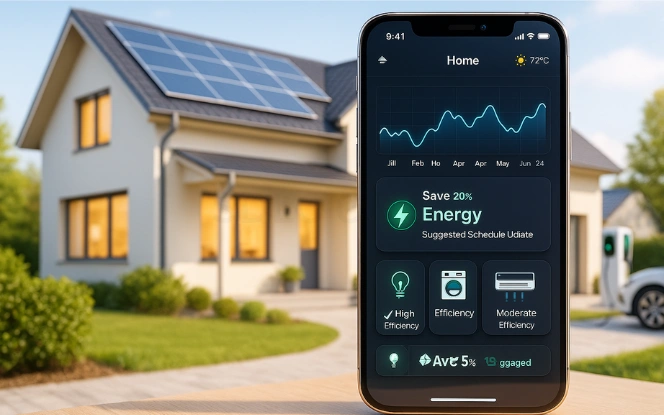
Generative AI in Home Automation helps reduce wasted power. It can analyze how lighting is used, suggest better schedules, and even generate new energy-saving strategies by predicting your daily routine.
Security Systems
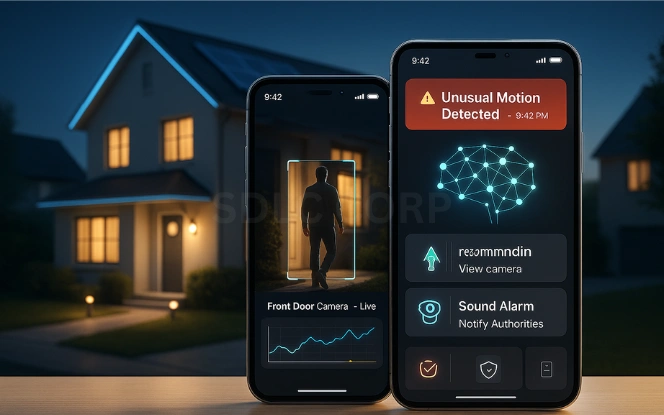
Unlike static cameras, IoT-powered security systems can generate adaptive alerts. For example, if motion at the door looks different from typical patterns, the system creates a unique response, like sending a warning with a generated risk profile.
Entertainment and Comfort

Generative AI for smart devices is also improving comfort. A television may create personalized recommendations by learning your viewing habits, while a sound system can adjust tones to your preferences automatically.
Personalized Assistance
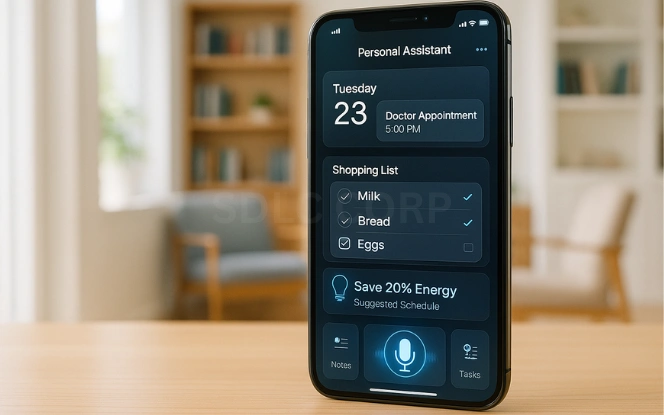
Voice-activated AI assistants are evolving from simple command tools into proactive household managers. They can generate shopping lists, manage schedules, and even adjust room settings to match moods. This is where personalized smart home automation begins to feel truly intelligent.
Personalisation and Context Awareness
Generative AI enables smart homes to respond more contextually by learning from user interactions over time. This includes adjusting lighting, climate, or security routines based on patterns rather than fixed rules. In such cases, a Generative AI consulting company may assist in evaluating model selection, data handling practices, and safeguards to ensure consistent and predictable behaviour.
Case Studies: Real-World Uses
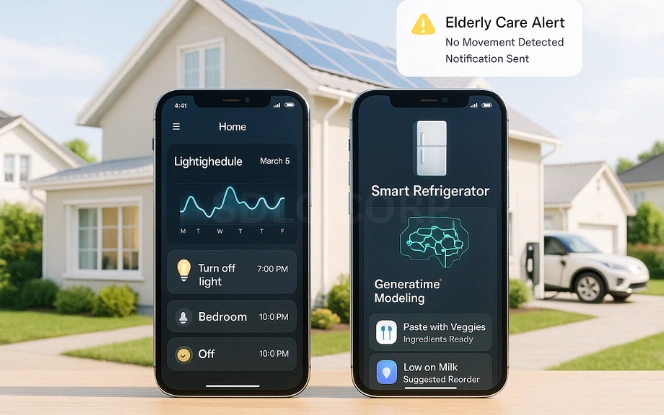
- Lighting Systems: Homes that use generative AI can create adaptive lighting schedules based on seasonal patterns. For instance, lights can be programmed to simulate sunrise in winter to support mental health.
- Kitchen Appliances: Refrigerators can now generate recipe suggestions based on available ingredients, avoiding waste.
- Elderly Care: Generative AI in home automation supports healthcare and elderly care solutions by generating daily reminders, detecting unusual movement patterns, and calling for help when required.
These examples highlight how the future of AI in home technology is not just about convenience but also about safety and well-being.
Benefits of Generative AI for Smart Devices
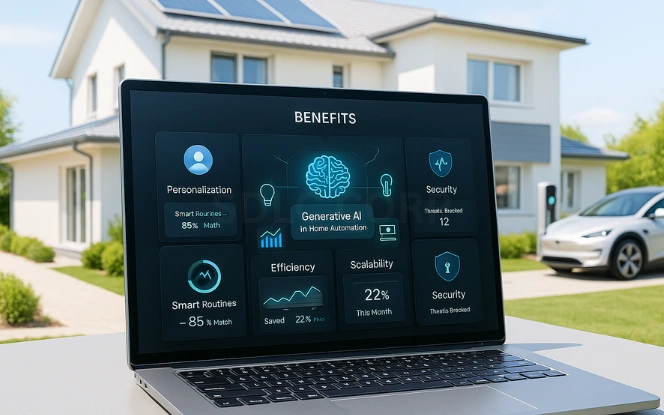
- Personalization: No two homes will feel the same. Devices adapt based on unique user patterns.
- Efficiency: Automated systems learn how to save both time and energy.
- Scalability: The same principles can expand across all devices in a smart home.
- Security: Generative modeling creates a more resilient defense against threats by learning anomalies.
Challenges and Risks
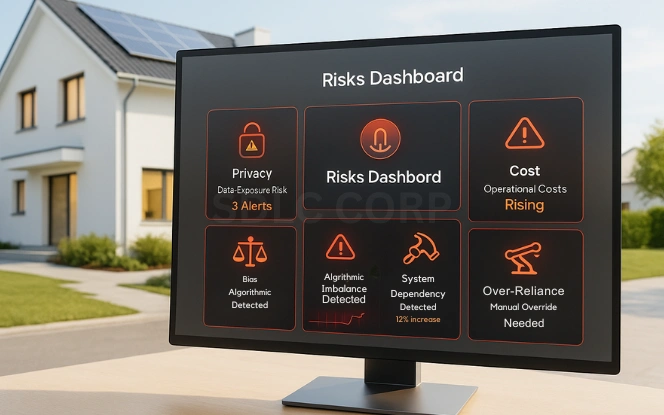
- Privacy: Homes collect personal data. Ensuring data is handled responsibly is critical.
- Bias in AI Models: If models are trained on limited data, their recommendations may not fit diverse households.
- Cost and Accessibility: Advanced AI-powered smart home solutions are still expensive for many users.
- Over-reliance on Automation: A balance must be kept so humans remain in control.
Despite these risks, the adoption of generative AI in home automation continues to grow. Technical safeguards and ethical frameworks are being developed to build trust.
Future of AI in Home Technology
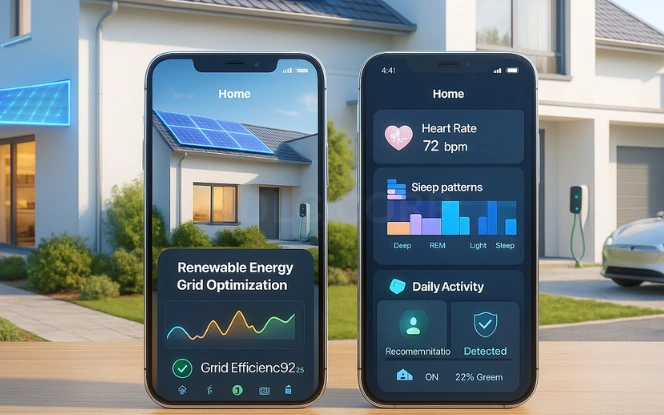
The role of generative AI is expected to expand significantly. Future homes may include:
- Systems that generate complete maintenance schedules.
- AI that designs personalized wellness routines based on health data.
- Generative models that collaborate with renewable energy grids to optimize household use.
The future of AI in home technology will likely blend security, efficiency, and sustainability. Smart homes will not only react but generate solutions to improve lives.
System Development and Ongoing Maintenance
Building reliable home automation systems requires careful implementation and long-term support. Generative AI components must be tested across devices and scenarios to avoid unexpected behaviour. Some organisations choose to hire generative AI developers to develop, fine-tune, and maintain these models as new devices and user needs are introduced.
Conclusion
Generative AI in Home Automation is reshaping how people live. By moving from simple command-based automation to adaptive intelligence, homes become more efficient, safer, and truly personalized. AI-powered smart home solutions are evolving into daily partners, while generative AI for smart devices ensures that every device learns and adapts. This is not only about convenience but also about building trust, reducing waste, and creating healthier environments.
As we look at voice-activated AI assistants, personalized smart home automation, and the broader future of AI in home technology, one thing is clear: the home of tomorrow is already taking shape today. For those looking to integrate these advancements into their lives or businesses, the time to start is now.Contact us SDLC corp
Hire AI Development Services with SDLC Corp to bring these cutting-edge capabilities into your smart home or business.
Read Related Blogs:
FAQs
What is Generative AI in Home Automation?
Generative AI in home automation refers to the use of AI models that create new solutions and routines for household systems. Instead of following fixed commands, these models learn user behavior and generate adaptive responses for comfort, energy savings, and security.
How does Generative AI for Smart Devices improve personalization?
Generative AI for smart devices improves personalization by studying individual habits, such as energy use, voice patterns, and lifestyle routines. It then generates adaptive schedules and settings that match the unique needs of each user, making personalized smart home automation more effective.
What role do Voice-activated AI Assistants play in smart homes?
Voice-activated AI assistants serve as the interface between users and smart devices. With generative AI, these assistants can go beyond responding to commands. They can predict needs, generate task lists, and manage household routines with greater intelligence.
What are the benefits of AI-powered Smart Home Solutions?
AI-powered smart home solutions make homes safer, more efficient, and user-friendly. They improve energy management, strengthen security through adaptive alerts, and create personalized comfort experiences, such as mood-based lighting or custom entertainment.
What is the future of AI in home technology?
The future of AI in home technology will involve deeper personalization, integration with renewable energy systems, predictive maintenance, and improved safety measures. Homes will generate proactive solutions that align with sustainability and evolving lifestyle needs.

